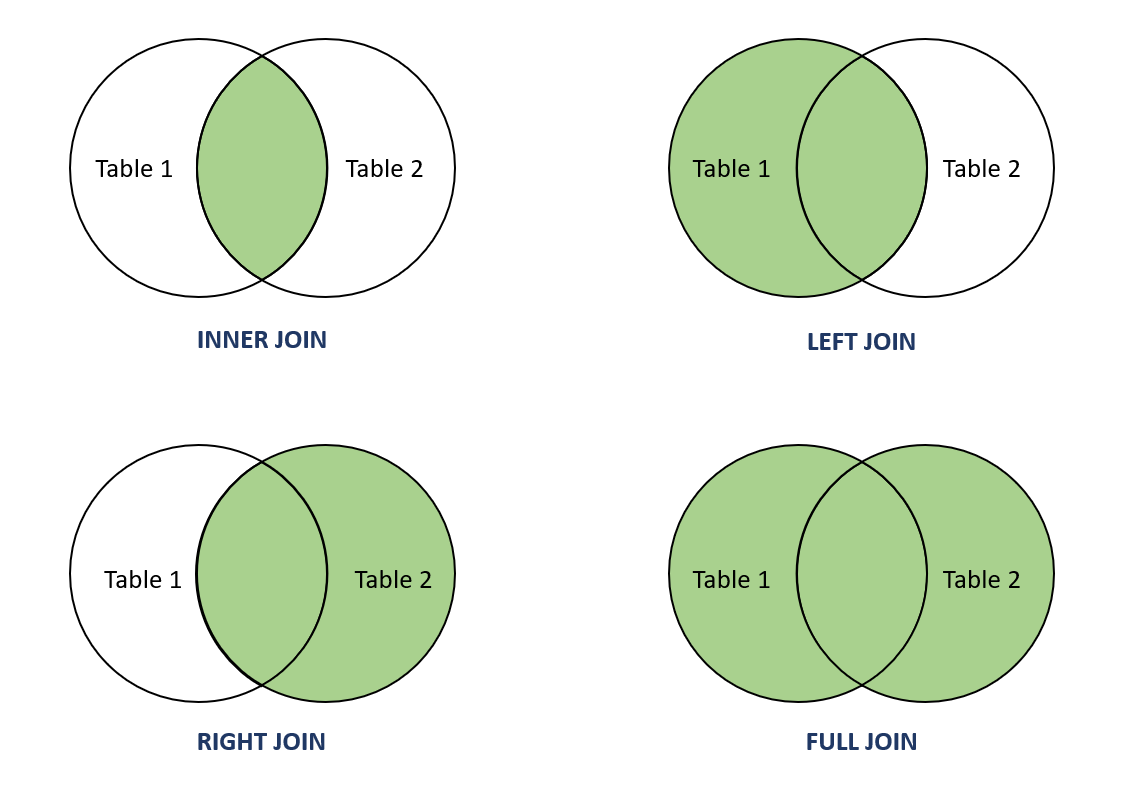SQL Server - JOIN
The SQL Server (Transact-SQL) JOIN clause is used to combine rows of two or more tables based on common column between them. There are four types of JOINs in SQL:
- INNER JOIN: It is sometimes called simple JOIN. It returns records based on matching rows in both tables.
- LEFT JOIN: It is sometimes called LEFT OUTER JOIN. It returns records which contains all rows from left table and matching rows from right tables.
- RIGHT JOIN: It is sometimes called RIGHT OUTER JOIN. It returns records which contains all rows from right table and matching rows from left tables.
- FULL JOIN: It is sometimes called FULL OUTER JOIN. It returns records which contains all rows from both tables.

Example:
Consider a database containing tables called Employee and Contact_Info with the following records:
Table 1: Employee table
| EmpID | Name | City | Age | Salary |
|---|---|---|---|---|
| 1 | John | London | 25 | 3000 |
| 2 | Marry | New York | 24 | 2750 |
| 3 | Jo | Paris | 27 | 2800 |
| 4 | Kim | Amsterdam | 30 | 3100 |
| 5 | Ramesh | New Delhi | 28 | 3000 |
| 6 | Huang | Beijing | 28 | 2800 |
Table 2: Contact_Info table
| Phone_Number | EmpID | Address | Gender |
|---|---|---|---|
| +1-8054098000 | 2 | Brooklyn, New York, USA | F |
| +33-147996101 | 3 | Grenelle, Paris, France | M |
| +31-201150319 | 4 | Geuzenveld, Amsterdam, Netherlands | F |
| +86-1099732458 | 6 | Yizhuangzhen, Beijing, China | M |
| +65-67234824 | 7 | Yishun, Singapore | M |
| +81-357799072 | 8 | Koto City, Tokyo, Japan | M |
-
The JOIN clause is used with Employee and Contact_Info tables based on common column EmpID. It returns Name, Age and Address columns based on match in both tables. The query is given below:
SELECT Employee.Name, Employee.Age, Contact_Info.Address FROM Employee JOIN Contact_Info ON Employee.EmpID = Contact_Info.EmpID;
This will produce the result as shown below:
Name Age Address Marry 24 Brooklyn, New York, USA Jo 27 Grenelle, Paris, France Kim 30 Geuzenveld, Amsterdam, Netherlands Huang 28 Yizhuangzhen, Beijing, China


